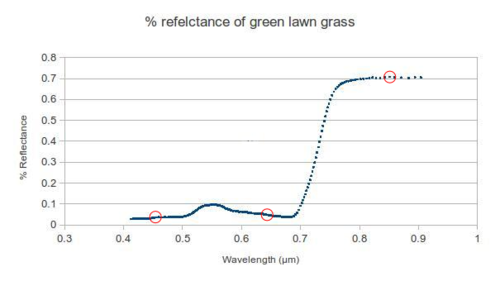What I want to do or know:
Can I generate a reflectance curve like that shown for lawn grass at the start of research note http://publiclab.org/notes/nedhorning/11-01-2013/why-a-red-filter-should-work-well-for-ndvi by simply pointing the Public Lab desktop spectrometer at a patch of grass on a sunny day? Would it be that simple, or would I need some optics to bring enough light into the desktop spectrometer for that to work? Or would it not work even then?
Background story:
Trying to find a way to analyze and track grass properties, initially using the method described in http://publiclab.org/notes/WhiteRabbit/07-25-2014/can-infragrams-provide-useful-measurements-of-thirsty-my-lawn-is, but now I'm wondering whether the Public Labs Desktop Spectrometer might be a shorter and possibly better path toward extracting data about a lawn's condition.

The Public Lab desktop spectrometer is quite capable of making a spectral graph of sunlight reflected from grass. The curve will differ from the professional reflectance curve for several reasons:
Most of these differences could be corrected if you tried hard enough.
Is this a question? Click here to post it to the Questions page.
One reason why the plab spectrometer is less sensitive in the infrared wavelength is the ir filter as part of the lens assembly. There are research notes on how to remove. Check mine.
Stef
Reply to this comment...
Log in to comment